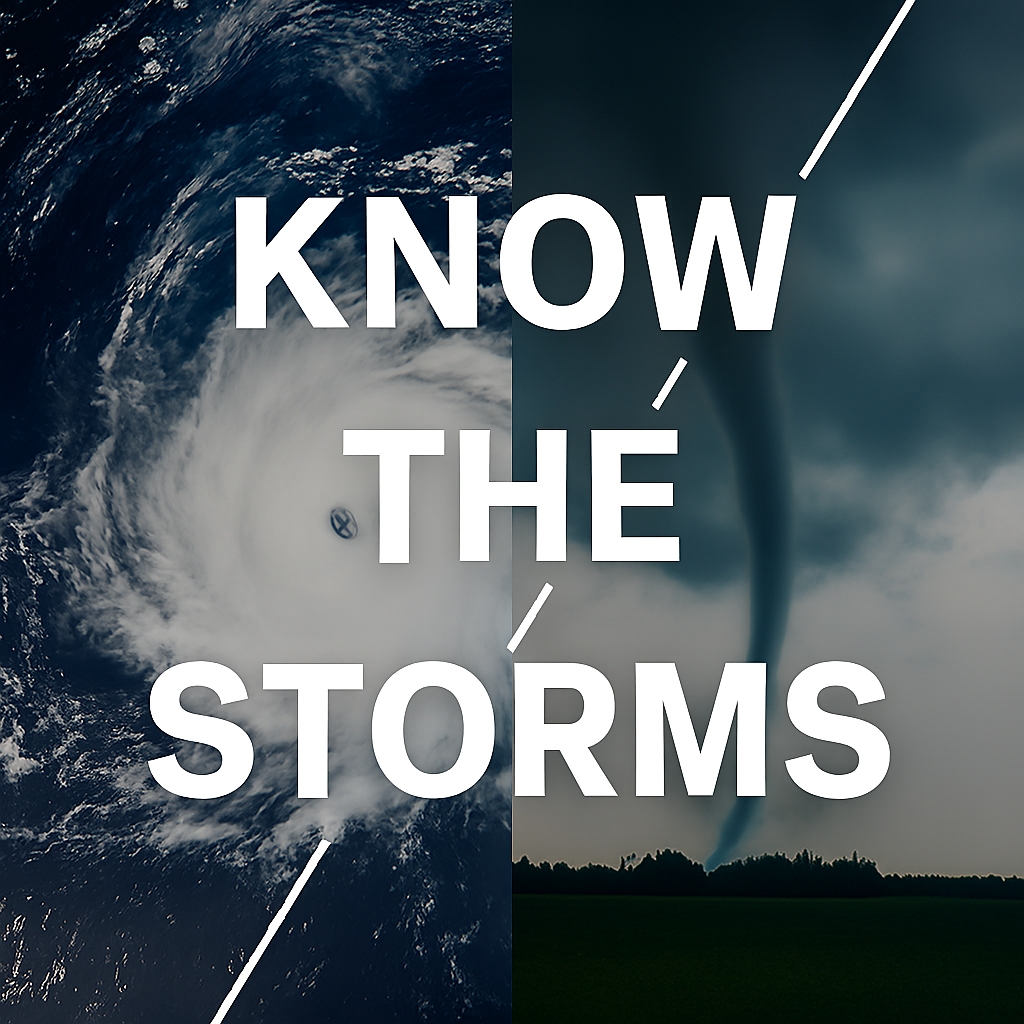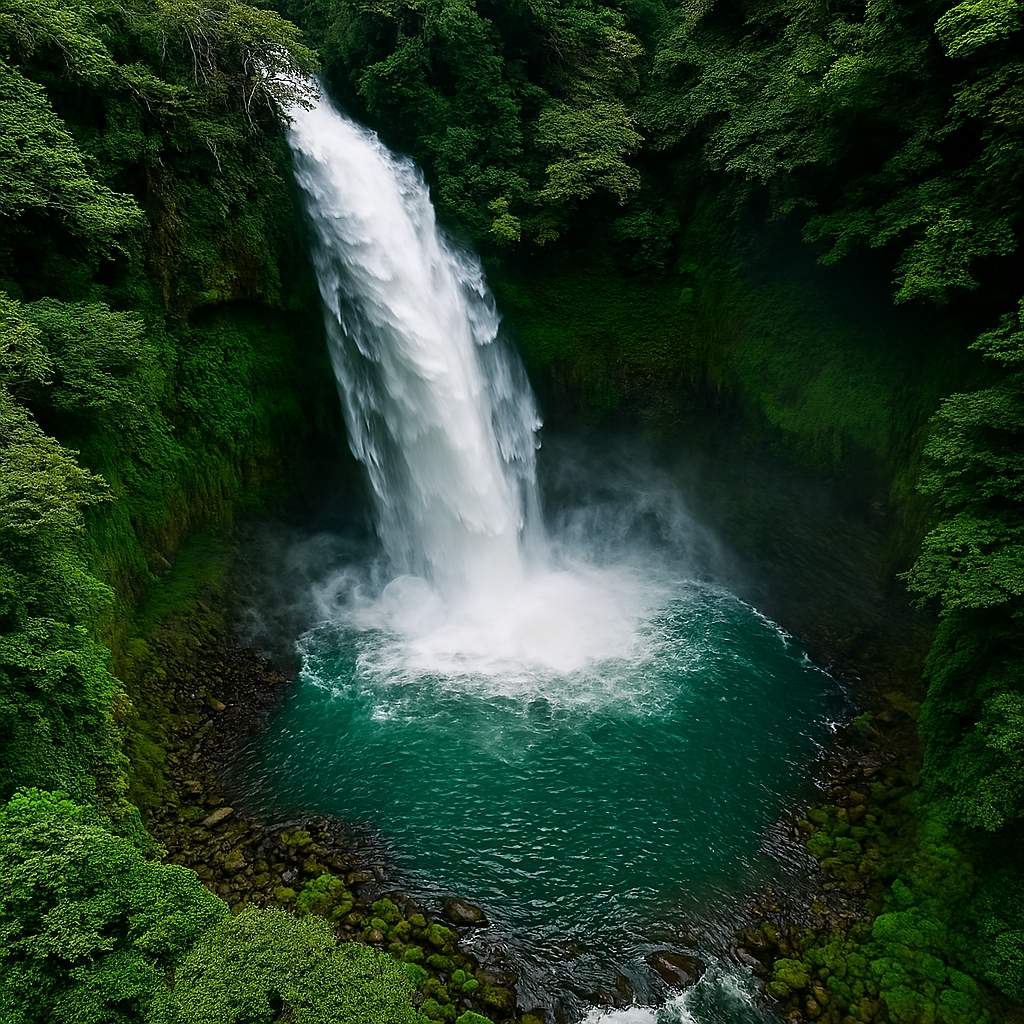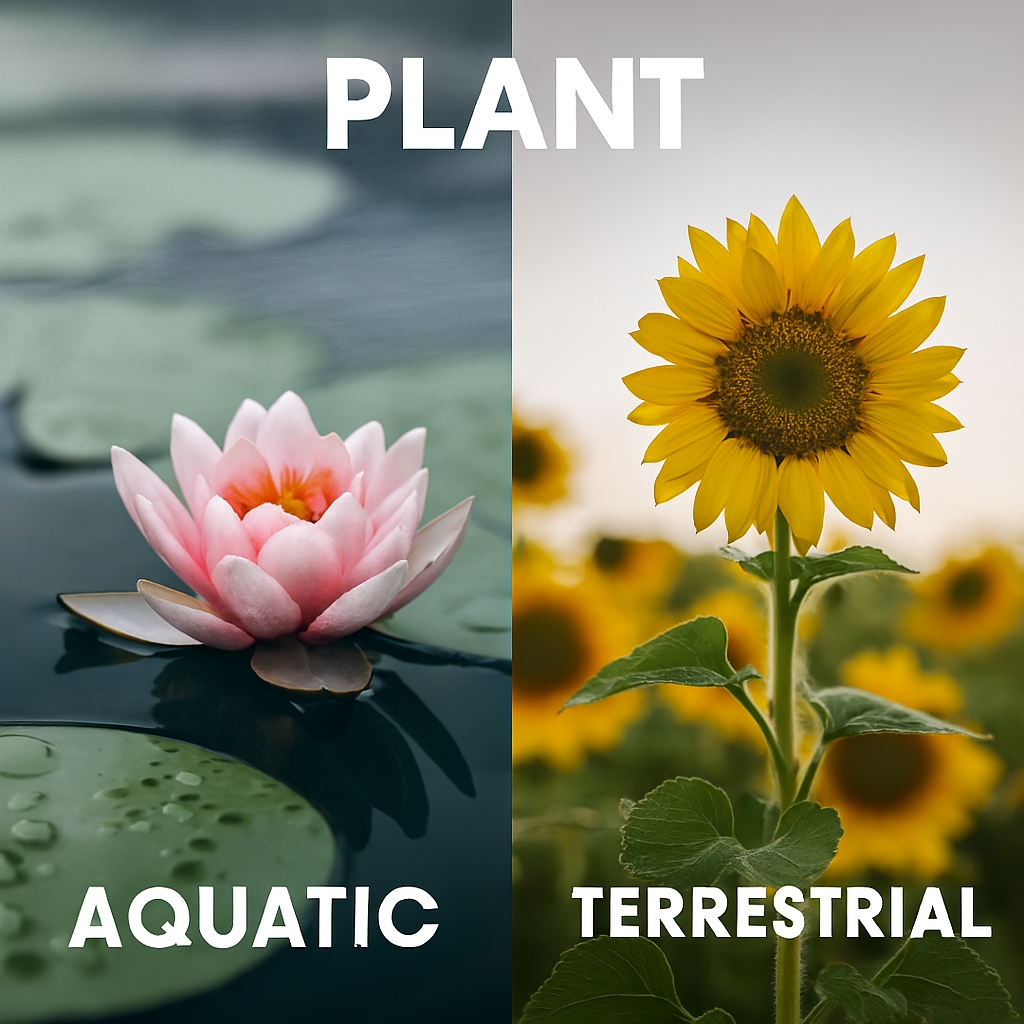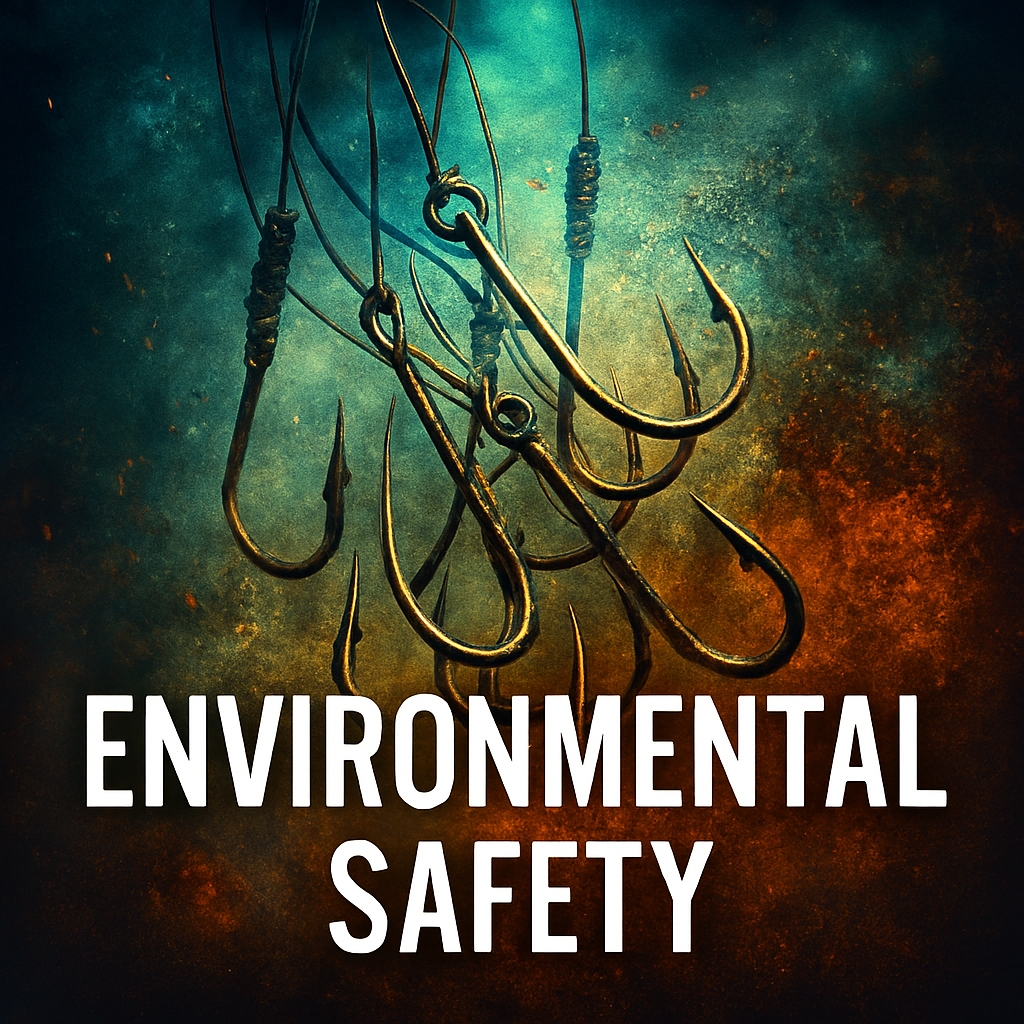What Is The Difference Between A Typhoon A Cyclone And A Tornado
Decoding The Storms
Extreme weather systems are among the most visually arresting and emotionally charged phenomena on Earth. Typhoons, cyclones, and tornadoes dominate headlines, disrupt lives, and shape entire ecosystems. Yet despite their prominence, public understanding of these storms is often muddled by overlapping terminology, regional naming conventions, and dramatic media portrayals.

Storm Systems
Atmospheric Identity – Defining Typhoons Cyclones And Tornadoes Clarifying The Core Terminology Behind Storm Systems
Typhoons, cyclones, and tornadoes are all rotating atmospheric systems, but they differ dramatically in scale, origin, and behavior. A cyclone is a general term for a large-scale air mass that rotates around a low-pressure center. It includes hurricanes and typhoons, depending on the region. A typhoon is more location based abd is a specific type of tropical cyclone that forms in a region Northwest Pacific Ocean. Tornadoes, by contrast, are small-scale, violently rotating columns of air that extend from thunderstorms to the ground. These distinctions are not just semantic—they reflect fundamental differences in formation, structure, and impact.
| Term | Definition |
|---|---|
| Cyclone | Large-scale rotating storm system around a low-pressure center |
| Typhoon | Tropical cyclone forming in the Northwest Pacific |
| Tornado | Narrow, rotating column of air from thunderstorm to ground |
| Feature | Cyclone/Typhoon | Tornado |
|---|---|---|
| Scale | Hundreds of kilometers | Hundreds of meters to a few km |
| Duration | Days to weeks | Minutes to an hour |
| Rotation Mechanism | Coriolis effect | Mesocyclone within thunderstorm |
| Formation Zone | Warm ocean waters | Land-based thunderstorms |
These systems are often confused due to overlapping visual cues—rotating clouds, intense winds, and destructive potential. However, their meteorological classification is distinct. Cyclones and typhoons are part of the same family, differentiated only by geography. Tornadoes belong to a separate category entirely, governed by different atmospheric dynamics.
| Confusion Source | Clarification Strategy |
|---|---|
| Shared rotation | Identify scale and origin |
| Media terminology | Use scientific classification |
| Regional naming | Map storm type to geographic location |
Understanding these distinctions is foundational. It allows meteorologists, educators, and the public to communicate clearly, prepare effectively, and respond appropriately to storm threats.
Geographic Anchoring – Where Storms Form And Why Names Change Mapping Meteorological Identity Across Global Regions
The naming of storm systems is deeply tied to geography. Cyclones, typhoons, and hurricanes are structurally identical but named differently depending on where they form. Tornadoes, however, are universally recognized and named independently of region. This module explores how geography shapes storm identity and public perception.
| Region | Storm Name Used |
|---|---|
| North Atlantic | Hurricane |
| Northwest Pacific | Typhoon |
| South Pacific/Indian | Cyclone |
| Continental Landmasses | Tornado |
| Storm Type | Ocean-Based Or Land-Based | Naming Based On Location |
|---|---|---|
| Cyclone | Ocean-Based | Yes |
| Typhoon | Ocean-Based | Yes |
| Tornado | Land-Based | No |
The Coriolis effect plays a key role in storm rotation and formation. In the Northern Hemisphere, storms rotate counterclockwise. In the Southern Hemisphere, they rotate clockwise. This hemispheric distinction affects not only storm behavior but also naming conventions and forecasting models.
| Hemisphere | Rotation Direction | Common Storm Types |
|---|---|---|
| Northern Hemisphere | Counterclockwise | Hurricanes, Typhoons |
| Southern Hemisphere | Clockwise | Cyclones |
Regional naming conventions are not arbitrary. They reflect historical patterns, linguistic traditions, and meteorological protocols. For example, the term “typhoon” originates from the Chinese word “tai fung,” meaning great wind. “Cyclone” comes from the Greek “kyklon,” meaning moving in a circle. These etymologies shape how societies interpret and respond to storms.
| Term | Linguistic Origin | Cultural Interpretation |
|---|---|---|
| Typhoon | Chinese | Great wind, seasonal threat |
| Cyclone | Greek | Circular motion, oceanic force |
| Tornado | Spanish | Thunderstorm vortex |
Geographic anchoring is more than a naming exercise. It influences disaster preparedness, public education, and international coordination. Understanding where and why storms form helps communities anticipate risks and build resilience.
Formation Mechanisms – How Typhoons Cyclones And Tornadoes Are Born Atmospheric Ingredients Behind Rotating Destruction
The birth of a storm is a complex dance of temperature gradients, moisture levels, and atmospheric instability. Tropical cyclones—including typhoons and hurricanes—form over warm ocean waters near the equator. These waters must reach a threshold temperature of approximately 26.5°C to provide the necessary heat energy. As warm air with moisture rises, it builds up and reates a low-pressure center. The Coriolis effect then causes the system to rotate, forming a cyclonic structure. This process is gradual, often taking days to develop into a full-fledged storm.
Tornadoes form under entirely different conditions. The difference is they originate over land, normally but not always during severe thunderstorms. The key ingredient is wind shear—changes in wind speed and direction with altitude. This creates horizontal rotation, which can be tilted vertically by updrafts within the storm. When this rotation tightens and intensifies, a tornado may form. Unlike cyclones, tornadoes do not require warm ocean water or large-scale atmospheric systems. Their formation is rapid, often occurring within minutes.
| Storm Type | Formation Zone | Key Ingredients | Time To Form |
|---|---|---|---|
| Cyclone/Typhoon | Warm ocean surface | Heat, moisture, Coriolis effect | Days |
| Tornado | Land-based | Wind shear, instability, updrafts | Minutes to hours |
| Atmospheric Layer | Role In Cyclone Formation | Role In Tornado Formation |
|---|---|---|
| Troposphere | Primary zone of convection | Primary zone of instability |
| Stratosphere | Minimal influence | Influences jet stream shear |
The contrast in formation mechanisms reflects the scale and complexity of each storm type. Cyclones are vast systems requiring sustained energy input, while tornadoes are compact, explosive events triggered by localized instability.
Structural Anatomy – Comparing The Physical Shape Of Storms Visualizing The Internal Architecture Of Atmospheric Systems
The internal structure of a storm reveals much about its behavior and impact. Tropical cyclones have a well-defined eye at the center, surrounded by an eyewall of intense winds and rain. This structure is rainbands in spirals that extend outward, creating a layered changing system that can sometimes span hundreds of kilometers. The eye is typically calm, with descending air, while the eyewall is the most violent part of the storm.
Tornadoes lack this layered structure. They consist of a narrow funnel extending from a thunderstorm cloud to the ground. The funnel is formed by rapidly rotating air, often visible due to condensation and debris. Tornadoes may be accompanied by a wall cloud and rear flank downdraft, but their anatomy is far simpler than that of a cyclone.
| Feature | Cyclone/Typhoon | Tornado |
|---|---|---|
| Central Core | Eye and eyewall | Funnel cloud |
| Outer Bands | Spiral rainbands | None |
| Vertical Depth | Up to 15 km | Up to 1–2 km |
| Horizontal Span | Hundreds of kilometers | Hundreds of meters to a few km |
| Structural Element | Function In Cyclone | Function In Tornado |
|---|---|---|
| Eye | Calm center | Not present |
| Eyewall | Peak wind zone | Not present |
| Funnel | Not present | Core of rotation |
| Rainbands | Precipitation zones | Not present |
Understanding and learning these structural differences is essential for forecasting now and the future, modeling, and planning. Cyclones require satellite imagery and large-scale models, while tornadoes are tracked using Doppler radar and storm chasers.
Wind Speed And Pressure Dynamics – Measuring The Power Of Rotation Quantifying The Force Behind Atmospheric Motion
Wind speed and pressure are the primary metrics used to assess storm intensity. Tropical cyclones are measured by sustained wind speeds, which can reach up to 300 km/h in Category 5 storms. The central pressure drops significantly as the storm intensifies, creating a stronger pressure gradient and faster winds. Tornadoes, however, are measured by peak wind speeds, which can exceed 480 km/h in the most violent EF5 events. Their pressure drop is localized but extreme, contributing to rapid rotation.
| Metric | Cyclone/Typhoon | Tornado |
|---|---|---|
| Wind Speed Range | 120–300 km/h | 100–480 km/h |
| Pressure Drop | Gradual, large-scale | Sudden, localized |
| Measurement Tool | Satellite, aircraft | Doppler radar, ground sensors |
| Classification Scale | Wind Speed Thresholds | Pressure Indicators |
|---|---|---|
| Saffir-Simpson | Category 1–5 | Central pressure drop |
| Enhanced Fujita | EF0–EF5 | Damage-based estimate |
The difference in wind dynamics reflects the nature and structure of the storm. Cyclones are sustained systems with consistent wind fields, while tornadoes are explosive, short-lived events with extreme localized force.
Damage Profiles And Impact Zones – Mapping Destruction Patterns Analyzing The Spatial Footprint Of Storm Events
The damage caused by a storm depends on its size, duration, and intensity. Tropical cyclones affect large regions, causing flooding, wind damage, and storm surges. Coastal cities are particularly vulnerable, with infrastructure, agriculture, and ecosystems at risk. Tornadoes, while smaller in scale, can be more destructive in their immediate path. They can level buildings, toss vehicles, and uproot trees within seconds.
| Damage Type | Cyclone/Typhoon | Tornado |
|---|---|---|
| Wind Damage | Widespread | Intense, localized |
| Flooding | Coastal and inland | Rare, unless rain is extreme |
| Storm Surge | Major coastal threat | Not applicable |
| Debris Impact | Moderate | Severe |
| Impact Zone | Cyclone/Typhoon | Tornado |
|---|---|---|
| Geographic Spread | Hundreds of kilometers | Few kilometers |
| Duration Of Impact | Days | Minutes |
| Recovery Time | Weeks to months | Days to weeks |
The symbolic difference lies in the nature of destruction. Cyclones are changing slow-moving structures of timely attrition, while tornadoes are quick, sudden, violent disruptions. Both are differnet emergency responses and planning short and long term.
Meteorological Classification Systems – How Scientists Rank Storms Establishing Scales Of Severity And Public Communication
Classification systems help meteorologists communicate risk and guide public response. Tropical cyclones are ranked using the Saffir-Simpson scale, which categorizes storms from Category 1 to Category 5 based on sustained wind speeds. This scale also correlates with expected damage and storm surge potential. Tornadoes are classified using the Enhanced Fujita (EF) scale, which ranges from EF0 to EF5. This scale is based on the estimated wind speeds in specific timing and observed damage.
| Classification Scale | Storm Type | Range | Basis Of Measurement |
|---|---|---|---|
| Saffir-Simpson | Cyclone/Typhoon | Cat 1–5 | Sustained wind speed |
| Enhanced Fujita | Tornado | EF0–EF5 | Damage and wind estimation |
| Category/Rating | Wind Speed (km/h) | Expected Damage Level |
|---|---|---|
| Category 1 | 120–150 | Minor structural damage |
| Category 5 | >250 | Catastrophic destruction |
| EF0 | 105–137 | Light damage |
| EF5 | >322 | Total structural failure |
These scales are not just technical tools—they are public safety instruments. They inform evacuation orders, insurance policies, and infrastructure design. The clarity and consistency of classification systems are vital for effective disaster management.
Seasonality And Frequency – When And Where Storms Strike Most Often Temporal Patterns In Atmospheric Violence
Storms do not strike at random. Their emergence follows seasonal rhythms shaped by ocean temperatures, atmospheric circulation, and regional geography. Tropical cyclones—including typhoons and hurricanes—have defined seasons. In the Atlantic, the official hurricane season runs from June 1 to November 30, peaking in September. The Northwest Pacific typhoon season is technically year-round but intensifies from July to October. In the Indian Ocean, cyclones are most common from April to December, with dual peaks in May and November.
Tornadoes, by contrast, are most frequent in spring and early summer, particularly in the United States. Tornado Alley—a region stretching from Texas through Oklahoma, Kansas, and Nebraska—experiences the highest concentration. However, tornadoes can occur in any month and in many countries, including Australia, Bangladesh, and Argentina.
| Region | Peak Cyclone Season | Peak Tornado Season |
|---|---|---|
| North Atlantic | August–October | April–June (USA) |
| Northwest Pacific | July–October | November–January (Australia) |
| Indian Ocean | May, November | March–May (Bangladesh) |
| Storm Type | Seasonality Pattern | Geographic Hotspots |
|---|---|---|
| Cyclone/Typhoon | Ocean-heated, seasonal | Tropics, subtropics |
| Tornado | Spring instability-driven | Mid-latitude continents |
The frequency of these storms is influenced by broader climate cycles. El Niño and La Niña events shift ocean temperatures and wind patterns, altering storm activity. For example, El Niño tends to suppress Atlantic hurricanes but increase Pacific typhoons. These oscillations add complexity to seasonal forecasting and preparedness planning.
Forecasting And Early Warning Systems – Staying Ahead Of The Storm Technological Vigilance In Atmospheric Surveillance
Modern meteorology has transformed storm forecasting from guesswork into a data-driven science. For tropical cyclones, we can get information from satellites which provide continuous monitoring of ocean basins. The technology of Infrared and visible imagery track cloud formation and change, while scatterometers measure surface winds. Aircraft reconnaissance—especially in the Atlantic—flies into storms to collect pressure, temperature, and wind data. These inputs feed into numerical weather models that simulate storm paths and intensities.
Tornado forecasting is more challenging. Their small scale and rapid formation make long-range prediction nearly impossible. Instead, meteorologists rely on Doppler radar to detect rotation within thunderstorms. When a mesocyclone is identified, soemtimes a tornado warning may be issued. Storm spotters and mobile radar units provide ground truth, enhancing situational awareness.
| Tool/Method | Cyclone/Typhoon Use | Tornado Use |
|---|---|---|
| Satellite Imagery | Track storm development | Monitor thunderstorm clusters |
| Doppler Radar | Monitor rainbands | Detect mesocyclones |
| Aircraft Recon | Measure wind/pressure | Not applicable |
| Numerical Models | Forecast path/intensity | Limited use |
| Forecasting Metric | Cyclone/Typhoon | Tornado |
|---|---|---|
| Lead Time | 3–5 days | 10–30 minutes |
| Accuracy | High (track), moderate (intensity) | Moderate (location), low (timing) |
| Public Alert System | Watches, warnings | Watches, warnings |
Early warning systems save lives. In cyclone-prone regions, governments issue tiered alerts—watch, warning, evacuation order—based on forecast confidence. “Tornado warnings demand immediate attention, typically communicated through high-decibel sirens, emergency push notifications, and abrupt media overrides designed to cut through ambient noise and hesitation. The effectiveness of these systems depends on public trust, communication clarity, and infrastructure readiness.
Collective Resilience And Restoration Rebuilding Communities After The Shockwave Of Atmospheric Force
When storms strike, the difference between survival and catastrophe often lies in the speed and coordination of emergency response. Tropical cyclones allow for preemptive action. Evacuation orders can be issued days in advance. Emergency shelters are stocked, and utility crews are pre-positioned. After landfall, response teams assess damage, restore power, and distribute aid. Recovery can take weeks or months, especially in low-income regions.
Tornadoes offer little warning. Response is reactive—search and rescue, triage, and debris removal. Because tornadoes often strike rural or suburban areas, local responders play a critical role. Community resilience—neighbors helping neighbors—becomes the backbone of recovery.
| Response Phase | Cyclone/Typhoon | Tornado |
|---|---|---|
| Pre-Impact | Evacuation, sheltering | Monitoring, shelter-in-place |
| Immediate Impact | Wind, flood, surge | Wind, debris, structural collapse |
| Post-Impact | Search/rescue, aid | Search/rescue, damage survey |
| Recovery Metric | Cyclone/Typhoon | Tornado |
|---|---|---|
| Infrastructure Damage | Widespread | Localized but severe |
| Economic Cost | Billions (USD) | Millions (USD) |
| Psychological Impact | Displacement trauma | Shock, PTSD |
Effective recovery requires coordination across government, NGOs, and local communities. Insurance coverage, building codes, and disaster relief funding all influence the speed and equity of rebuilding. The symbolic difference is scale—cyclones test national systems, tornadoes test neighborhood bonds.
Cultural Interpretations And Symbolic Meaning – Storms In Story And Society How Humanity Makes Sense Of Atmospheric Power
Storms are not just meteorological events—they are cultural symbols. In East Asia, typhoons are woven into seasonal calendars and folklore. In Japan, the term “taifu” evokes both fear and reverence, tied to agricultural cycles and ancestral memory. In the Caribbean, hurricanes are linked to colonial history, resilience, and spiritual belief systems. Tornadoes in the American Midwest are part of a cultural mythology—prairie survival, storm chasing, and cinematic spectacle.
These interpretations shape how societies prepare for and respond to storms. In Bangladesh, cyclone shelters double as schools and community centers, reflecting a culture of adaptation. In the U.S., tornado drills are part of school routines, embedding preparedness into childhood experience.
| Region/Culture | Storm Type | Symbolic Meaning |
|---|---|---|
| Japan | Typhoon | Seasonal rhythm, ancestral memory |
| Caribbean | Hurricane | Colonial trauma, spiritual resilience |
| USA Midwest | Tornado | Frontier survival, cinematic drama |
| Bangladesh | Cyclone | Community adaptation, shared space |
| Cultural Practice | Storm Type | Function |
|---|---|---|
| Naming Conventions | Cyclone/Typhoon | Personalizes threat, aids memory |
| Storm Drills | Tornado | Instills preparedness |
| Memorial Rituals | All | Honors loss, reinforces resilience |
Understanding these symbolic layers enhances communication and policy. It allows meteorologists, educators, and leaders to frame warnings in culturally resonant ways. Storms are not just physical—they are emotional, historical, and narrative forces.

Climate Change And Storm Evolution – A Warming World’s Impact On Storm Behavior Amplification Of Atmospheric Extremes
Climate change is reshaping the behavior of storms. Warmer oceans provide more energy for tropical cyclones, increasing their intensity and rainfall potential. While the total number of storms may not rise dramatically, the proportion of Category 4 and 5 storms is increasing. Storms are also moving more slowly, prolonging rainfall and flooding. Sea level rise amplifies storm surge, threatening coastal cities.
Tornadoes are also affected, though the science is more complex. Some studies suggest that tornado outbreaks are becoming more frequent and intense. The geographic distribution is shifting, with more tornadoes occurring in the southeastern U.S. rather than the traditional Tornado Alley. This shift challenges existing preparedness systems and insurance models.
| Climate Impact | Cyclone/Typhoon | Tornado |
|---|---|---|
| Ocean Warming | Increases storm intensity | Indirect influence |
| Atmospheric Instability | Enhances rainfall | Fuels supercell development |
| Geographic Shift | Expands storm zones | Moves tornado hotspots |
| Climate Metric | Observed Trend | Implication |
|---|---|---|
| Sea Surface Temp | Rising | More intense cyclones |
| Jet Stream Behavior | Altered | Tornado path unpredictability |
| Urban Heat Islands | Intensifying | Localized storm amplification |
Adapting to these changes requires rethinking infrastructure, insurance, and emergency planning. Coastal cities are investing in sea walls and green infrastructure.
Technological Innovations In Storm Tracking Tools That Transform Forecasting Into Life-Saving Precision
The evolution of storm tracking technology has revolutionized how societies anticipate, monitor, and respond to atmospheric threats. For tropical cyclones, satellite surveillance remains the cornerstone of early detection. Geostationary satellites provide continuous imagery of storm development, while polar-orbiting satellites offer high-resolution snapshots of cloud structure and temperature gradients. These tools allow meteorologists to identify storm genesis zones days before formation.
Aircraft reconnaissance, particularly in the Atlantic basin, adds a critical layer of precision. Hurricane Hunter planes fly directly into storms, deploying dropsondes that measure temperature, humidity, pressure, and wind speed at various altitudes.
Tornado tracking relies on a different technological arsenal. Doppler radar systems detect wind velocity within thunderstorms, revealing rotation patterns that may precede tornado formation. Mobile radar units and storm chasers provide ground-level validation, capturing real-time footage and damage assessments.
| Technology | Cyclone/Typhoon Use | Tornado Use |
|---|---|---|
| Geostationary Satellite | Continuous monitoring | Thunderstorm cluster tracking |
| Polar-Orbiting Satellite | High-res temperature data | Not commonly used |
| Aircraft Reconnaissance | In-storm measurement | Not applicable |
| Doppler Radar | Rainband analysis | Rotation detection |
| Mobile Radar | Not used | Ground-level wind mapping |
| Innovation Type | Forecasting Benefit | Storm Type Most Affected |
|---|---|---|
| AI-Powered Modeling | Improved path prediction | Cyclone/Typhoon |
| Real-Time Alert Apps | Faster public warnings | Tornado |
| Satellite Constellations | Global coverage expansion | Cyclone/Typhoon |
These innovations are not just technical—they are deeply human. The symbolic shift is from helplessness to informed vigilance.
Comparative Case Studies Of Historic Storms Learning From The Past To Prepare For The Future
Historical storms offer invaluable lessons in meteorology, emergency response, and societal resilience. Consider Typhoon Haiyan, which struck the Philippines in 2013. With sustained winds of 315 km/h and a storm surge over six meters, it devastated coastal communities and killed over 6,000 people. The storm’s intensity and rapid intensification challenged forecasting models and overwhelmed local infrastructure.
Contrast this with the 2011 Joplin tornado in Missouri, USA. Rated EF5, it carved a path nearly 2 km wide and 35 km long, killing 158 people. The event prompted a reevaluation of tornado communication strategies.
| Storm Name | Type | Year | Fatalities | Key Lessons Learned |
|---|---|---|---|---|
| Typhoon Haiyan | Typhoon | 2013 | 6,300+ | Surge forecasting, evacuation logistics |
| Joplin Tornado | Tornado | 2011 | 158 | Warning clarity, shelter access |
| Cyclone Nargis | Cyclone | 2008 | 138,000+ | Government transparency, aid access |
| Hurricane Katrina | Hurricane | 2005 | 1,800+ | Levee failure, urban vulnerability |
| Case Study Element | Cyclone/Typhoon Example | Tornado Example |
|---|---|---|
| Urban Impact | New Orleans (Katrina) | Joplin, Missouri |
| Rural Impact | Myanmar (Nargis) | Greensburg, Kansas (2007) |
| Communication Breakdown | Tacloban (Haiyan) | Joplin (warning fatigue) |
These case studies reveal that storm type is only part of the equation.
Symbolic Differences In Public Perception How Language And Imagery Shape Storm Awareness
The way storms are named, described, and visualized affects how people perceive and respond to them. Their names are drawn from rotating lists maintained by regional meteorological agencies. These names humanize the storm, making it easier to remember but sometimes harder to fear.
Tornadoes, by contrast, are often described in cinematic terms—twisters, funnels, monsters. Their suddenness and visual drama make them staples of disaster films and storm-chasing documentaries. This dramatization can both heighten awareness and trivialize risk.
| Storm Type | Common Media Language | Public Perception |
|---|---|---|
| Typhoon | “Superstorm,” “Monster” | Distant, overwhelming |
| Cyclone | “Deadly spiral,” “Beast” | Regional, seasonal |
| Tornado | “Twister,” “Funnel of doom” | Immediate, personal |
| Symbolic Element | Cyclone/Typhoon | Tornado |
|---|---|---|
| Naming System | Rotating human names | No formal naming |
| Visual Iconography | Satellite spirals | Ground-level funnel |
| Cultural Metaphor | Oceanic rage | Sky’s fury |
These symbolic frames influence behavior. Like a known named cyclone may set an evacuation, while a tornado warnings due to lots of reasons may be ignored if the sky looks calm.
Infrastructure Design And Engineering Responses Building For Survival In A Storm-Shaped World
Infrastructure is the frontline defense against storm damage. In cyclone-prone regions, buildings are designed with reinforced concrete, storm shutters, and elevated foundations. Coastal cities invest in sea walls, levees, and surge barriers. Urban drainage systems are upgraded to handle extreme rainfall.
Tornado resilience requires different strategies. Safe rooms, underground shelters, and wind-resistant construction are key. In the U.S., the Enhanced Fujita scale informs building codes in tornado-prone areas. Schools and hospitals are often retrofitted with reinforced corridors or interior shelters.
| Infrastructure Type | Cyclone/Typhoon Focus | Tornado Focus |
|---|---|---|
| Residential Housing | Elevated, wind-braced | Anchored, low-profile |
| Public Buildings | Surge-resistant | Safe rooms, reinforced cores |
| Transportation Systems | Flood-proofed roads | Debris-resistant overpasses |
| Engineering Feature | Purpose In Cyclone Zones | Purpose In Tornado Zones |
|---|---|---|
| Storm Shutters | Prevent window failure | Not commonly used |
| Roof Tie-Downs | Resist uplift | Critical for mobile homes |
| Underground Bunkers | Not applicable | Primary shelter strategy |
Designing for resilience is not just technical—it’s symbolic. It reflects a society’s willingness to invest in safety, equity, and long-term survival. Infrastructure becomes a form of storytelling: a visible commitment to withstanding the storm.
Insurance Models And Economic Risk Management Financing Recovery In A World Of Escalating Storms
Storms are not just natural events—they are financial shocks. Insurance systems play a critical role in distributing risk and funding recovery. In cyclone-prone regions, property insurance often includes wind and flood coverage, though premiums are rising due to climate volatility. Reinsurance markets help spread the financial burden across global portfolios.
Tornado insurance is typically bundled into standard homeowner policies in the U.S., but coverage varies by state. Deductibles may be higher in high-risk zones.
| Insurance Type | Cyclone/Typhoon Coverage | Tornado Coverage |
|---|---|---|
| Homeowners Insurance | Often excludes flood | Includes wind, excludes flood |
| Flood Insurance | Separate policy required | Rarely purchased |
| Reinsurance | Common for large events | Less common |
| Economic Metric | Cyclone/Typhoon Impact | Tornado Impact |
|---|---|---|
| Average Claim Size | High (infrastructure loss) | Moderate (localized damage) |
| Recovery Time | Months to years | Weeks to months |
| Insurance Penetration | Low in developing nations | High in U.S. tornado zones |
The symbolic dimension of insurance is trust. It represents a promise that recovery is possible, that loss will not mean ruin. As storms intensify, insurance models must evolve—not just to remain solvent, but to remain just.
Psychological And Social Impacts – Emotional Aftermath Of Atmospheric Trauma Storms As Catalysts For Collective Memory And Mental Health Challenges
Storms leave more than physical destruction—they imprint emotional scars. Survivors of tropical cyclones often experience prolonged issues. The slow onset of these storms allows time for dread to build, intensifying anxiety and anticipatory trauma. In contrast, tornadoes strike with little warning, producing acute shock and disorientation.
Social cohesion is tested during and after storms. Communities may rally together, reinforcing bonds through shared recovery efforts. Alternatively, resource scarcity and uneven aid distribution can fuel tension and mistrust. Mental health services are often under-resourced, especially in rural or low-income areas, leaving survivors to navigate trauma without adequate support.
| Psychological Effect | Cyclone/Typhoon | Tornado |
|---|---|---|
| Anticipatory Anxiety | High due to long warning | Low due to short lead time |
| PTSD Risk | Moderate to high | High, especially in children |
| Community Response | Coordinated, prolonged | Immediate, localized |
| Social Impact Metric | Cyclone/Typhoon | Tornado |
|---|---|---|
| Displacement Duration | Weeks to months | Days to weeks |
| Aid Distribution | International coordination | Local and state-level response |
| Mental Health Access | Often delayed | Often unavailable |
Storms become part of collective memory. Annual anniversaries, memorials, and survivor networks help communities process grief and build resilience. The symbolic role of storms shifts from threat to transformation—catalysts for change, reflection, and solidarity.
Education And Public Awareness Campaigns – Teaching Survival Through Symbolic Literacy Embedding Storm Knowledge Into Everyday Life
Education is the cornerstone of storm preparedness. In cyclone-prone regions, schools incorporate disaster drills, evacuation maps, and climate literacy into curricula. Public campaigns are growing and use television, radio, and social media to disseminate warnings and give usefull safety tips. Visual aids—storm path animations, shelter diagrams, and infographics—enhance comprehension across age groups and literacy levels.
Tornado education is often more tactile. In the U.S., students practice “duck and cover” drills, identify safe zones, and learn to interpret radar images. Community workshops teach residents how to build safe rooms, recognize warning signs, and respond to sirens.
| Educational Tool | Cyclone/Typhoon Use | Tornado Use |
|---|---|---|
| School Drills | Evacuation practice | Shelter-in-place routines |
| Public Service Ads | Surge and wind warnings | Rotation and funnel alerts |
| Interactive Maps | Track storm paths | Identify risk zones |
| Awareness Strategy | Target Audience | Symbolic Message |
|---|---|---|
| Youth Education | Students and families | Empowerment through knowledge |
| Elder Outreach | Vulnerable populations | Safety through simplicity |
| Multilingual Campaigns | Diverse communities | Inclusion and clarity |
Education transforms fear into agency. It equips individuals with the tools to understand, not just do. The symbolic shift is from passive victimhood to active stewardship—citizens as co-navigators of atmospheric risk.
Legal Frameworks And International Cooperation – Governing Storm Response Across Borders Policy Architecture For Atmospheric Accountability
International frameworks guide disaster response, funding, and data sharing. The Sendai Framework for Disaster Risk Reduction, adopted by the United Nations, outlines global goals for resilience, early warning systems, and infrastructure investment. Regional bodies—such as ASEAN and the Caribbean Disaster Emergency Management Agency—coordinate cyclone response across member states.
Legal systems also shape domestic readiness. Building codes mandate wind-resistant construction. Zoning laws restrict development in flood-prone areas. Insurance regulations may or may not determine coverage limits and claim procedures. Emergency declarations unlock federal aid and mobilize military resources.
| Legal Instrument | Cyclone/Typhoon Focus | Tornado Focus |
|---|---|---|
| Building Codes | Surge and wind resistance | Wind and debris protection |
| Zoning Laws | Coastal development limits | Mobile home restrictions |
| Emergency Declarations | Federal aid activation | State-level response |
| International Framework | Scope Of Cooperation | Symbolic Role |
|---|---|---|
| Sendai Framework | Global resilience goals | Shared responsibility |
| Regional Agreements | Data and aid coordination | Solidarity across borders |
| Climate Treaties | Emission reduction | Prevention through policy |
Legal frameworks are more than bureaucratic tools—they are expressions of collective will. They reflect a society’s commitment to protect life, property, and dignity in the face of atmospheric threat.

Ecological Consequences And Environmental Feedback Loops – Storms As Agents Of Ecological Change Atmospheric Events That Reshape Landscapes And Ecosystems
Storms are ecological forces. Tropical cyclones can reshape coastlines, erode beaches, and destroy coral reefs. Their rainfall replenishes aquifers but also causes landslides and sediment runoff. Tornadoes flatten forests, disrupt animal habitats, and scatter invasive species. These impacts ripple through ecosystems, altering food chains, migration patterns, and biodiversity.
Storms also interact with climate feedback loops. Cyclones stir ocean layers, affecting heat distribution and carbon absorption. Tornadoes, while less influential globally, contribute to localized atmospheric mixing. The destruction of vegetation reduces carbon sequestration, while flooding releases methane from wetlands.
| Ecological Impact | Cyclone/Typhoon | Tornado |
|---|---|---|
| Coastal Erosion | High | Minimal |
| Forest Destruction | Moderate | High |
| Habitat Disruption | Widespread | Localized |
| Environmental Feedback | Storm Type | Climate Influence |
|---|---|---|
| Ocean Mixing | Cyclone/Typhoon | Alters heat distribution |
| Methane Release | Cyclone flooding | Increases greenhouse effect |
| Vegetation Loss | Tornado path | Reduces carbon absorption |
Storms are not just destructive—they are transformative. They reset ecological systems, sometimes creating opportunities for regeneration. The symbolic role of storms in nature is dual: destroyer and rebuilder.
Conclusion And Join The Discussion – Restoring Meaning In Meteorological Complexity From Confusion To Clarity Through Modular Understanding
Typhoons, cyclones, and tornadoes are not interchangeable terms—they are distinct atmospheric phenomena with unique origins, structures, and impacts. Through this modular editorial, we’ve unpacked their differences across geography, formation, damage, forecasting, and cultural meaning. Each storm type demands responses, from basic help, infrastructure design to psychological support.
Understanding these distinctions is more than academic. It empowers communities to prepare, respond, and recover with precision and compassion. It restores symbolic clarity to a world often overwhelmed by sensational headlines and fragmented terminology.
Join The Discussion – Share Your Experience And Insights
- How has your community prepared for storms?
- What cultural narratives shape your understanding of weather?
- What innovations or policies do you believe could improve resilience?
#StormClarity #TyphoonVsTornado #CycloneKnowledge #AtmosphericResilience #WeatherWisdom #ModularMeteorology #SymbolicStorms #ClimatePreparedness #DisasterLiteracy #EcologicalImpact













Leave a Reply